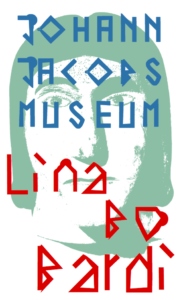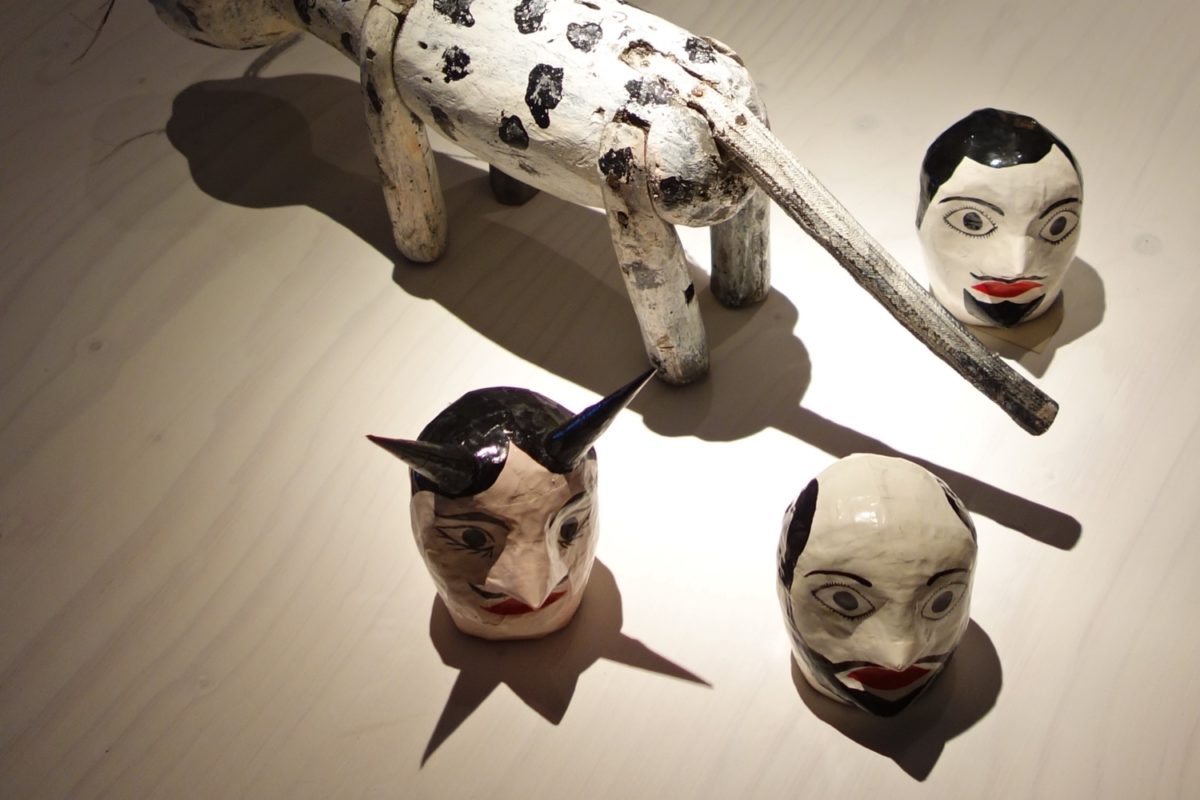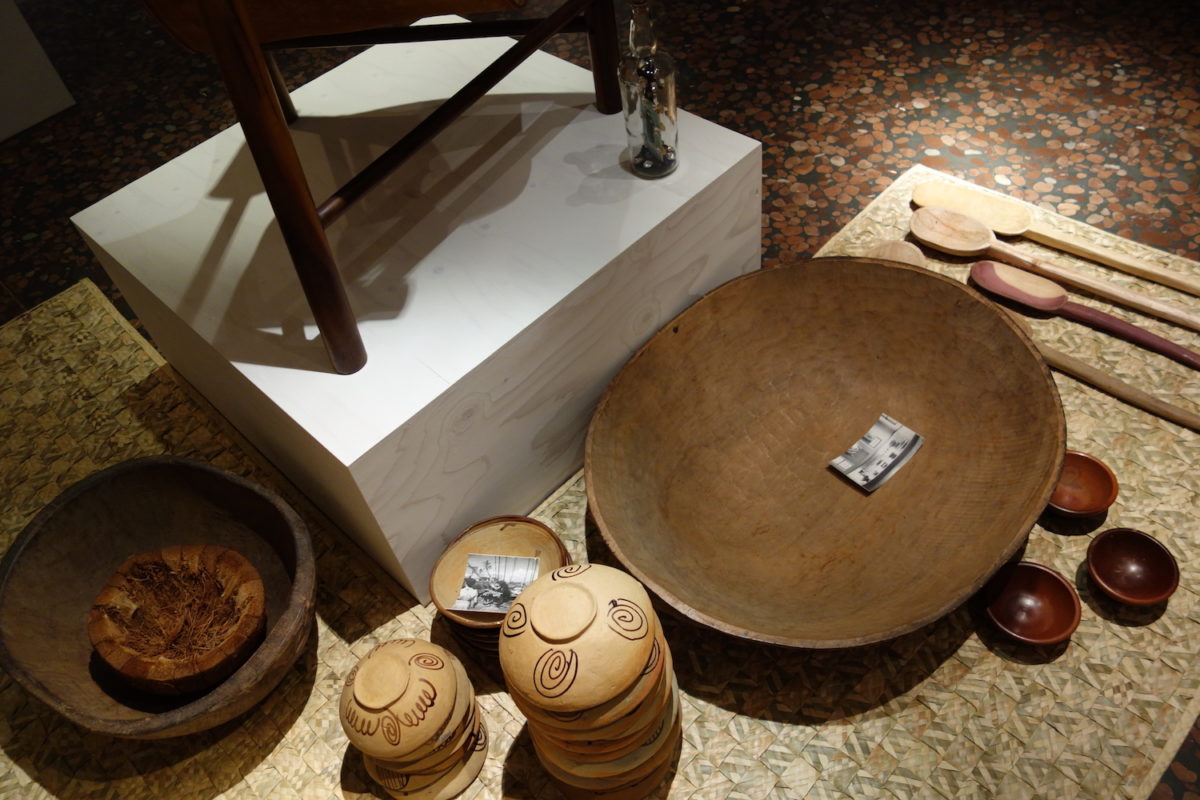The first part of the exhibitions series to the Italian/Brazilian architect and designer Lina Bo Bardi will focus not on her famous buildings, such as the Casa do Vidro (1950-51), the MASP (Museo do Arte São Paulo, 1957-68) or the SESC Pompeía culture and leisure centre (1977-86). We will look instead at an unknown project that ultimately failed: the Museo do Arte Popular in Salvador da Bahia, Brazil’s first colonial capital. From the 16th century onwards, this baroque metropolis of the “New World”, whose wealth was founded primarily on sugar, was the hub of the trans- continental slave trade and later the cradle of Afro-Brazilian culture.
The Museo do Arte Popular’s inaugural exhibition, the trailblazing Civilization of the North East, took place in November 1963. The exhibition had a dual objective: to provide an overview of design in Brazil’s North East and to furnish a basis for local industrialization, or “modernization from the bottom up”. Its aim, then, was not to present choice artefacts, which are inevitably imbued with an aura, so much as everyday items: objects that testify not only to the intense poverty and backwardness of the region but also to its inhabitants’ sheer determination to survive and the poetry that informs their lives. They include simple clay pots painted with African ornamental motifs, roughly carved votive offerings, huge wooden spoons for stirring moqueca (Bahian fish stew), oil lamps made of spent light bulbs or tin cans, as well as clothes and blankets patchworked together from cloth remnants.

For her venue, Bo Bardi chose the Solar do Unhão, a complex of buildings directly on the Atlantic coast. In the course of its chequered history, it had served as a home for slaves, a sugar works, a tobacco factory and an ammunition dump. With a few deft strokes, she transformed it into a place fit for an exhibition. Even today, the architecture and layout document the intermeshing of colonial dominance, overseas trade and the Christian church. Slaves would arrive at the jetty and be baptised in the church before being housed in the barracks and sold on the square.
In April 1964, just under six months after it opened, the Museo do Arte Popular was closed again as a result of private intrigues and a military coup that brought an abrupt end to the euphoric atmosphere prevailing in Brazil after the Second World War. The erstwhile collection was packed in wooden crates and banished to the cellar of a government building in Salvador where it languished unheeded for decades.
What could be the point, then, of reopening those crates today and putting the dusty artefacts they contain on show in Zurich?
What impulse could the Museo do Arte Popular give to ongoing debates about cultural globalization? Bo Bardi had no interest in exhibiting strange, alien and occasionally incomprehensible elements of the North East’s civilization, or in promoting artefacts such as wooden mortars, ceramic vases, woven baskets or votive offerings as if they were “masterpieces”, merely to appeal to Western ways of thinking. After all, the Museo do Arte Popular’s target public was people who already owned the items on show at the museum and who used them in their daily lives, but who were not necessarily aware of the creative dynamism that inspired the artefacts. However, the target public also included architecture and design students who, it was hoped, could use the guidelines provided by the objects to understand the character of the North East’s civilization. In both cases, the Museum provided the basis for individuals to design the world according to their needs.
 Historically, the desire for recognition of the culture of the North East and its “Aesthetic of Hunger” (Glauber Rocha) is closely linked with the all-encompassing modernization campaigns initiated in the 1950s. The declared aim of the then president Juscelino Kubitschek was to transform Brazil into a modern, decolonized state that could hold its own with the West. The most infamous product of this period of planning-inspired mania is Brasilia, the new “test tube” city that was built in record time in the country’s barren interior. Bo Bardi, who had come to Brazil as an Italian immigrant in 1946, directly after the war and the collapse of Mussolini’s imperialist house of cards, was mistrustful of the dirigiste fervour of a “modernization from the top down”. Like many of her compatriots (the Italian post-war architects or neorealist filmmakers, for instance), she took her lead from the Marxist theory of practice of Antonio Gramsci, the co-founder and general secretary of Italy’s Communist Party. Following his arrest by Mussolini in 1926, he had set down his most important writings in prison.
Historically, the desire for recognition of the culture of the North East and its “Aesthetic of Hunger” (Glauber Rocha) is closely linked with the all-encompassing modernization campaigns initiated in the 1950s. The declared aim of the then president Juscelino Kubitschek was to transform Brazil into a modern, decolonized state that could hold its own with the West. The most infamous product of this period of planning-inspired mania is Brasilia, the new “test tube” city that was built in record time in the country’s barren interior. Bo Bardi, who had come to Brazil as an Italian immigrant in 1946, directly after the war and the collapse of Mussolini’s imperialist house of cards, was mistrustful of the dirigiste fervour of a “modernization from the top down”. Like many of her compatriots (the Italian post-war architects or neorealist filmmakers, for instance), she took her lead from the Marxist theory of practice of Antonio Gramsci, the co-founder and general secretary of Italy’s Communist Party. Following his arrest by Mussolini in 1926, he had set down his most important writings in prison.
One of the main causes of disagreement between Gramsci and Mussolini was the unresolved conflict between the rich, industrialized north of Italy and the impoverished south, the mezzogiorno. While the Fascists attempted to tackle the problem with nationalist development programmes, Gramsci had recognized early on that the struggle for a renaissance of society and its culture could succeed only if “it sinks its roots into the humus of popular culture as it is, with its tastes and tendencies and with the moral and intellectual world, even if it is backward and conventional.” (Prison Notebooks No. 15, §58). Practically speaking, according to Gramsci’s thinking, emancipation must emerge from the everyday understanding and the existing practice and knowledge of the simple people.
Bo Bardi applied precisely this insight to the Brazilian North East. Much of what she saw here must have reminded her of the mezzogiorno: both the poetic, agrarian-inspired popular culture as well as the hair-raising structural problems. Not least of all was the imbalance between the region and the rich, industrialized South, the Brazil of the white elite, mainly composed of the European immigrants who had arrived in the 19th and 20th centuries.
If Brazil were to embrace modernity, Bo Bardi contended, it would have to be a form of modernity that did not simply imitate European cultural ideals, but whose point of departure lay in the practices, customs and creative energy of its population.
With her plea for modernization from the bottom up, Bo Bardi was not alone: her initiative was firmly embedded in a cultural and intellectual milieu that was troubled by the same questions. In 1961, for example, the MCP Popular Culture Movement was founded in Recife. Among its champions was Paulo Freire, a philosopher and educator whose “Pedagogy of the Oppressed” took very similar views to those of Gramsci. Freire, too, rejected the idea that learning lies in the adoption of a prescribed educational canon. He spoke out in favour of an emancipatory pedagogical model that focused on the practical, everyday knowledge of the pupils and strengthened their resolve to make their own way to liberation. He used this approach in the early 1960s in his successful literacy campaigns before being forced into exile in Switzerland following the military coup.
Assembling the collection to be shown at the Museo do Arte Popular was a joint effort in which institutions such as the Museum of the University of Céara under the guidance of Livío Xavier were also involved. On maps of the country’s northeastern region, artist friends and anthropologists identified the locations that were famous for their ex-votos, their pottery and wickerwork. From the 1950s on, Lina Bo Bardi and her husband Pietro Maria Bardi (who merits an exhibition of his own) used these maps on their travels through the northeastern hinterland as they sought out the culture of their new homeland. Unlike classical ethnologists, the Bardis focused their attention less on individuals, or their popular myths and rituals, concentrating instead on the apparently unoccupied use of form and materials in the everyday world of objects. Their archive conveys the impression that they wanted to extrapolate the state of society from the consistency, texture and arrangement of the objects it generated.
A systematic evaluation of the material civilization of the North East forms the core of Bo Bardi’s first and last exhibition in the Solãr do Unhão. Her approach was distinctly sober. Instead of showing objects being used in everyday contexts, the display suggests a scientific tableau that identifies the various groups of items in terms of family similarities, compares them and establishes a relationship between them. As mentioned above, this tableau was not limited to providing an overview of the “Civilization of the North East”. At the same time, it opened up a realm of possibility that contained both the formal and practical resources needed for a future, emancipatory form of modernism. Indeed, Bo Bardi had plans to establish workshops and a design school in the Solãr do Unhão complex. Here, students would ingest the earthy materiality of the collection and thus remain immune to utopian flights of fancy or any other unnecessary frills.

At the same time, the display gave the local populace an altered perception of their own culture. Presenting the exhibits in a museum was designed to ennoble them: to enhance the status of all the objects that had been vilified as coarse, unskilled or, as Bo Bardi herself described them, “pre-artisanal” before anyone had even recorded their desire to assert themselves aesthetically. The ennoblement of the objects went hand in hand with the ennoblement of the world in which they had their origins.
Bo Bardi’s only genuinely architectural intervention in the Solar do Unhão building can also be interpreted as part of this link: we refer here to the magnificent freestanding staircase that connects the ground floor with the first floor, whose wooden elements were stuck together in the traditional fashion of ox carts. This staircase was intended precisely for those whose emergence Brazil’s racist bourgeoisie had attempted to suppress and who, over the centuries, had made this negative image part of their self-perception.
To sum up, it was not the intention of the Museo do Arte Popular to silence the artefacts. But neither was it an interactive museum. Its display, including the staircase, attempted to liberate the artefacts as civilizing elements and to give them a visible presence.












 The table on which the indigenous man stands is a design by the Italian Lina, that is to say, from the time before embarking for Rio in 1946. The Madonna, reminiscent of 18th century Bavarian or Austrian Madonnas its mannerist softness, originated in the Amazonia and was originally painted with brightly-colored vegetable pigments.
The table on which the indigenous man stands is a design by the Italian Lina, that is to say, from the time before embarking for Rio in 1946. The Madonna, reminiscent of 18th century Bavarian or Austrian Madonnas its mannerist softness, originated in the Amazonia and was originally painted with brightly-colored vegetable pigments.
